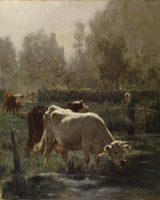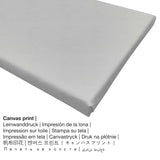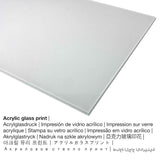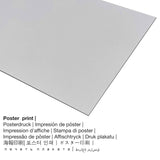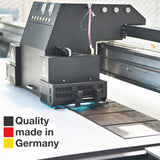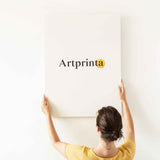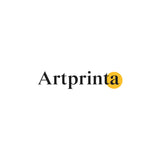Emile van Marcke, 1850 - N'isi ụtụtụ - mbipụta nka mara mma
Ụtụ gụnyere. Mbupu gbakọrọ na ndenye ọpụpụ.
Nchịkọta ngwaahịa
Nke a kariri 170 afọ ọrụ nka Ututu oma onye na-ese ihe sere ya Emile van Marcke in 1850. Today, the artpiece is in the the digital collection of Ụlọ ihe ngosi nka nke Walters, nke dị na Baltimore, Maryland, Njikota Obodo Amerika. a ngalaba ọha A na-enye mpempe nka site n'ikike nke Ụlọ ihe ngosi nka nke Walters.: . Na mgbakwunye na nke ahụ, nhazi ahụ bụ Eserese na akụkụ ruru nke 1: 1.2, nke pụtara na ogologo bụ 20% mkpụmkpụ karịa obosara.
(© Nwebiisinka - nke Walters Art Museum - www.thewalters.org)
Mmanụ na kwaaji, H: 24 13/16 x W: 19 7/8 inch (63 x 50.5 cm)
The Walters Art Museum Acquired by William T. Walters, between 1878 and 1884
Description: A white cow drinking in the foreground is about to be joined by three other cows progressing at intervals toward the pool. They are tended by a girl leaning against a gatepost. The scene is drenched by early morning sunlight. Emile van Marcke de Lummen was born in Sèvres, France, the location of one of the most prominent porcelain factories. Van Marcke, and many members of his family, were employed there. Working here he was introduced to Troyon, one of the foremost porcelain painters, who served as a large influence on van Marcke's area of interest - cows and other animals.
Ozi ndabere gbasara nka nka izizi
| Aha nke eserese ahụ: | "Early Morning" |
| Nhazi nka: | sere |
| Otu sara mbara: | nkà nke oge a |
| Century: | 19th narị afọ |
| Emepụtara na: | 1850 |
| Afọ nka: | karịa afọ 170 |
| Ụlọ ihe ngosi nka: | Ụlọ ihe ngosi nka nke Walters |
| Ebe ngosi nka: | Baltimore, Maryland, Njikota Obodo Amerika |
| Weebụsaịtị nke ihe ngosi nka: | Ụlọ ihe ngosi nka nke Walters |
| Akwụkwọ ikike nka: | ngalaba ọha |
| Site n'aka: | Ụlọ ihe ngosi nka nke Walters |
Banyere onye na-ese ihe
| aha: | Emile van Marcke |
| Aha ndị ọzọ: | Emile van Marcke, Marcke Emile van |
| Gender: | nwoke |
| Obodo onye nka: | French |
| Ọrụ: | onye na-agụ akwụkwọ, onye na-ese ihe |
| Mba onye si: | France |
| Otu nka: | omenkà nke oge a |
| Akwụsị: | 63 afọ |
| Afọ ọmụmụ: | 1827 |
| Obodo ọmụmụ: | Brussels, Bruxelles mpaghara, Belgium |
| Afọ nwụrụ: | 1890 |
Which kind of product materials can I choose?
The product dropdown menu provides you with the chance to pick the size and material of your choice. We allow you to pick your favorite size and material among the following product individualization options:
- Mbipụta akwụkwọ mmado (ihe kwaaji): A poster is a UV printed canvas with a nice finish on the surface. It is suited for placing the fine art print using a special frame. Please note, that depending on the size of the poster we add a white margin of something between 2-6cm round about the painting to facilitate the framing with a custom frame.
- Mbipụta kanvas: The canvas print, which should not be confused with a canvas painting, is a digital image printed onto canvas material. Furthermore, a printed canvas produces a homelike, comfy appearance. Your canvas of your favorite masterpiece will let you turn your fine art print into a large size work of art as you know from art galleries. Canvas prints are relatively low in weight, which means that it is easy and straightforward to hang your Canvas print without the support of extra wall-mounts. A canvas print is suited for any kind of wall.
- Mbipụta ọla (aluminium dibbond): Aluminium Dibond prints are metal prints with an impressive depth - for a modern look and non-reflective surface structure. A direct Aluminium Dibond Print is the excellent start to fine art reproductions made with aluminum. For your Direct Print On Aluminum Dibond, we print your favorite artpiece onto the surface of the white-primed aluminum material. This direct UV print on aluminium is the most popular entry-level product and is a truly sophisticated way to display art reproductions, because it puts the viewer’s focus on the replica of the artwork.
- Mbipụta iko acrylic na-egbuke egbuke (ya na mkpuchi iko n'ezie): The acrylic glass print, often referenced as a plexiglass print, will convert the artwork into magnificient home décor and makes a viable alternative option to aluminium and canvas prints. Our real glass coating protects your chosen fine art print against light and external influences for decades.
Banyere akụkọ
| Nkewa edemede: | ọmarịcha nka |
| Mmeputakwa: | dijitalụ mmeputakwa |
| Usoro nhazi: | mbipụta dijitalụ (Mbipụta UV ozugbo) |
| Production: | arụpụtara na Germany |
| Ụdị ngwaahịa: | mmepụta ihe na-achọ |
| A na-atụ aro iji ngwaahịa eme ihe: | ihe ndozi mgbidi, ime ụlọ |
| Ntuziaka onyonyo: | usoro eserese |
| Ụdị anya: | 1: 1.2 (ogologo: obosara) |
| Ntụgharị nkọwa akụkụ onyonyo: | ogologo bụ 20% mkpụmkpụ karịa obosara |
| Akwa ngwaahịa dị: | ígwè ebipụta (aluminium dibond), acrylic glass print (nwere ezigbo mkpuchi iko), mbipụta akwa akwa, mbipụta akwụkwọ mmado (akwụkwọ kwaaji) |
| Mpempe akwa akwa (akwa akwa na etiti ihe ndọtị) nha: | 50x60cm - 20x24" |
| Mpempe iko acrylic (nwere ezigbo mkpuchi iko) nha dị iche iche: | 50x60cm - 20x24" |
| Mpempe akwụkwọ mmado (akwụkwọ kwaaji) nha dị iche iche: | 50x60cm - 20x24" |
| Nhọrọ nke mbipụta aluminom (aluminium dibond material) | 50x60cm - 20x24" |
| ụba: | oyiri nka na-enweghị isi |
Important legal note: We try everythig possible in order to depict the products in as much detail as possible and to display them visually in our shop. Still, the tone of the print materials, as well as the printing may diverge slightly from the image on the monitor. Depending on the screen settings and the quality of the surface, color pigments may not be printed as realistically as the digital version depicted here. Given that our fine art prints are processed and printed manually, there might as well be slight variations in the motif's size and exact position.
Nwebiisinka © | www.artprinta.com (Artprinta)

